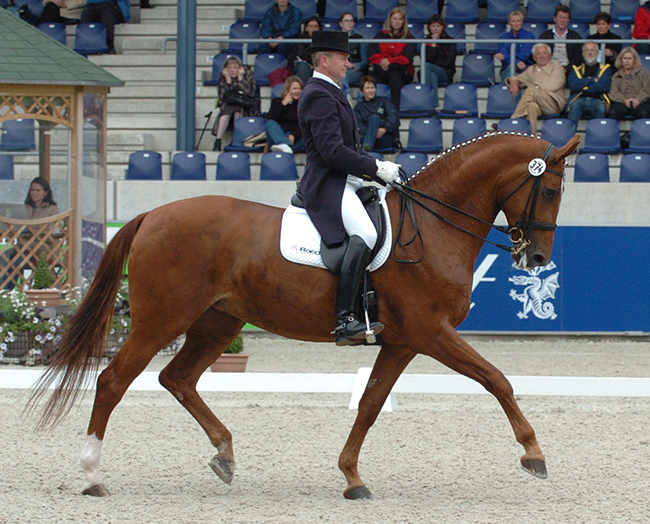
In the debate about dressage training methods, there is one rider who is always identified as the carrier of the classical tradition, one rider whose soft and sympathetic riding style is held up as an example of the ‘correct’ way – and that rider / trainer is Hubertus Schmidt.
Mr Schmidt has trained many many horses to Grand Prix, and he is, indeed, one of the most inspiring riders in the world, he is also a very thoughtful observer of the current scene, and by no means one-sided in his views of the current controversy….
There has been a lot of talk for a long time about the classical way of training, and ways that are not classical. How do the riders tell if they are going the right way, the classical way?
“In Germany we have to follow the richtlinien, the guidelines, we have a book, and it says, this and this, that is the right way. It takes you all the way from the warm up – making the horse loose and supple, step by step to the next point to higher collection, and later to pirouettes, piaffe and passage. There is a totally clear directive on how to do it. Okay it also depends on the horse, one horse needs to be a little higher, another a little deeper in the neck, but over all, all you need to do is follow the principles of the training scale – this is the way to do it.”
Can you tell you are working in the correct way, if the horse is always ready to take the rein and stretch and go long?
“That is one way to check that you are on the right way – in the high collection you must be able to stretch them so they follow the bit and they are not stuck up there. In every situation you must be able to stretch them – even a piaffe or a pirouette, even then, I must be able to do it. Okay if I do it for a longer period of time, they will lose the self carriage and come more on the front legs, but I must be able to do it because 90% of the horses are too short in the high collection, they are not really using the back, they come up and short by themselves, and the rider can’t make them longer or deeper.”
“Look at the piaffe for example, see how high and how short most of the horses are and not as active behind. In Germany we have a word for it – Aufrichtung – which means the horse is high in the forehand, but it must be relative, which means if the neck is higher, the croup must be lower, and there must always be the right balance. If there is only the neck up and the croup is not deep, that’s what you see very often, it is wrong, the rider has not got the back, the front leg is high and nothing happens behind.”
The same in the extended trot?
“That is when they start more running than swinging, but I think a lot of horses that are not good in collection, are able to be good in extension – because extension is more pushing forward and not so much carrying. For a young horse it is much easier to do an extended trot than a collected trot – that is for sure. I think most of the problems that come about because the horse is stuck up in front and not really good in the back, come in the high collection.”
There is some discussion now that some movements should be included in the Grand Prix test to see if the horses are truly calm and relaxed…
“There is a lot of discussion of movements like the rein back and walk pirouettes, but in the Grand Prix you also have to make it interesting for the people who are watching on TV and the test should not be too long. Now I think they have found the right compromise. This new Grand Prix is a good Grand Prix. For me this double in half pass in trot is very very short, a bit too short, and that is the only thing I don’t like because it is very difficult to keep the horse really nicely swinging when they are crossing so much side-ways – but that is the only thing, in everything else I think it is a good test. There are other opportunities to see tension – for example, if the passage is loose and supple – or if it is tense and only up and down. And you can see the same in the piaffe.”
“The problem is that the judges give the right scores for that – it is not only how high the horse moves its legs in the piaffe, also they must be loose and supple, that is the most important thing. We see horses that are very good in piaffe, they can do a 9 or 10, they are special horses, hot horses, and the next piaffe can be very tense, very hectic, so much so that you are worried they are going to jump out of it – and they get the same high score! That is not right. I think if the judges really follow their rules and guidelines, they can judge what they see. We don’t have to change so much.”
So how do we change the judges, we have a problem at the moment?
“This is a problem as long as I have been riding. It’s not so long, but since 1994 I have been riding at international shows, and it has never been very different. It is very difficult, they try and make a lot of clinics, and say ‘this is what we want to see’ but at the end it is funny – it doesn’t matter if it is the Olympics or a very small show, you see scores between 6 and 9 or 6 and 8 quite often, and on the same movement. There are so many factors, they want to be invited again, they don’t want to be the highest, they don’t want to be the lowest, they are also under pressure. It is not worse now, it was the same ten years ago.”
But have the training methods got worse, in St Georg Magazine, they suggest that the training is now a long way from the correct line?
“In that I agree, I don’t like this way of training – that is not okay but this is different from judging. The steward at the warm up area has to say ‘stop, this is not horsemanship, this is not fair to the horse’. There are riders making their horses very very short in the neck and very very deep, most of the Dutch riders do this, and a few of the Germans, but most of the Dutch – and for me, that is not fair to the horses. The important thing is that they do this for such a long time, a whole hour so deep and so short, with the mouth on the chest. That is not okay with me.”
“Everybody knows that sometimes you have to make a horse lower to get it loose and supple, but the important thing is ‘sometimes’ – for a few moments maybe to correct something, and not the whole time. I don’t know if it causes the horse pain, for this we need very good seminars and clinics with good vets and they must check this out – is that bad for the muscles? Is that bad for the bones later?”
“The vet, Dr Heuschmann says that if you work the horses so short for a long time then later in their life they will have trouble with their vertebrae – we have to check this out, check the blood circulation, the muscles, so that we can say, okay it is not only that this doesn’t look good, it is also painful for the horses, and therefore it is forbidden. Or if it is not painful and it is just another way of training, then okay I don’t like it because it looks wrong but it is not forbidden. Dressage normally comes from natural things – like passage, you can see the horse make a passage in the field, or you can see young horses making pirouettes, but you never see a horse running along with its head on its chest…”
“Now is the time for the FEI to say, we need a proper examination of this whole question – get researchers in Germany and The Netherlands, and say please check this – is it fair to the horses? Is it painful for the horse? If they find there are problems, then it is not allowed to ride like this – it is already not allowed to use the spurs too hard, and it is not allowed to use the whip too hard, why is it allowed to take the curb and have them so short and behind the vertical for an hour? At the moment everybody talks about these things, but for me it is not 100% clear. For me, the horse does not look happy when they ride in this way.”
“Another thing I don’t understand is that they say ‘okay this is a new way of training, it is the best way of training, we make them supple, we stretch them and we make the horse loose and active – but on the other hand, they take people to court if they show pictures from this sort of riding! Hey what’s going on, if this is your program, and you say, this is our way to train, why are people not allowed to show it? The pictures in St Georg magazine were from the Dutch championship, it is not as if the photographers wait and wait until there is one bad situation and they take a picture, they work the whole time like that. It is not only the Dutch, we have riders in Germany who work a bit like that, and I also don’t like it. Sjef Janssen said this is the new way to train good Grand Prix horses, that is wrong.”
But they win Gold Medals?
“That doesn’t matter, we must also think of the horses, we must do it as nice as possible for them too. That is very important. Okay sometimes we have to be a little bit harder, but at the end, good training is very light and easy going, for rider and the horse. It is not fun but it must be light for the horses too. What I don’t like about this new method is that they can train the horse at Grand Prix level for four or five years and win Gold Medals, and yet the work is like fighting every time they work – then I think something is wrong with the training. If I train a horse very well, then at the end you have them with very light aids, and you can’t see what I am doing. At the end of the training of a good Grand Prix horse, it must look like he does it by himself. And we should not just focus on the five minutes in the ring, also the warmup and the training. Everything fits together. You have to say with the Dutch riders that often in the test it looks good, but that is only five or six minutes, and we have to look at the whole thing together, the warmup, the training, and the test.”
“But we must have a proper decision – is it bad for the horses, or is it good?”
How do we measure mental stress?
“You can see that, and I am sure you can check it scientifically by checking things like hormone levels.”
But sometimes you see this new style even in the young horses classes?
“I think it is getting better at the German Bundeschampionate, now they don’t want to see a horse that is so up in front and trotting like a Grand Prix horse at the age of three or four. I think it’s better, maybe not 100%, but better. With the three-year-old horses we don’t want to see them uphill, we want them a little longer, stretched more naturally. It is once again the judges, the riders will do what the judges want to see.”
Even at the World Championships, we see five and six year old horses, so high in front, such extravagant movement with their front legs – is the problem getting worse because of the emphasis on young horse classes? In the past the five and six year olds were not so interesting for the trainers, but now they are going on the wrong path before they even come to Grand Prix?
“You’re right, once there weren’t such important classes for five and six year olds. I hadn’t thought about it before, but you are right, it adds to the pressure. Once again it is up to the judges. Look at a young horse like Florencio, he is an unbelievable mover – his canter is so huge. I didn’t see him at this year’s championship, but once I warmed up in the same arena as him, and it was nice riding and produced unbelievable movement. He was just trotting like that, it was not that the rider held him and pushed him to make him tense; he was absolutely swinging and uphill, I never saw a horse like that before.”
“The horses are becoming better and better from better breeding, much better movers. But yes it is interesting that the concentration on the Bundeschampionate and the World Young Horse Championships, then maybe things get a little worse. Normally we have our rules – at five the horse should look like this, and at six he should look like that. If they are only up in front and not good behind, then it is wrong, the score is not a nine it is only a six.”
Okay there are worries about some of today’s training methods, but surely in the past with some of those big, heavy old-fashioned horses, I don’t think the training methods were so gentle or beautiful then?
“I agree, in Germany, the riding is 100% better than twenty years ago. The horses go better, and they are easier to keep swinging and loose because they are built better and bred better than 30 years ago. Think of Piaff, that was a very famous horse, the winner of a gold medal at the Munich Games in 1972 – he would have no chance of winning a medal today.”
There is no excuse today because the horses are much more suited to dressage, it is easier for them… Why do riders persist in using stressful methods when following the ‘straight’ way is so much easier?
“I don’t know. For me, the philosophy is that the training must be as nice as possible for the horse, for me it is no fun if I have to fight all the time, then I think okay, this horse is not good enough, or I can’t ride him. It’s too lazy or too nervous, then maybe he can go jumping but for dressage it is not the right horse. For sure you have horses that are lazy and you have to push them harder and use the spurs more but with the training, it must become better and better, that is important. The goal must be that after a few years of training in Grand Prix, it must be easy going. But that is not the philosophy of a lot of riders, maybe they feel that they must make the legs go higher and higher in piaffe and passage and not that they have to go easier. I want both, but for me it is more important, that there is harmony.”
But for instance at the beginning of the dressage test, there should be a clear halt, then why not say, here the rider must surrender the reins, really test that the horse is happy to stand still?
“But it is a problem and I sometimes have this problem with my mare, Wansuela Suerte, that she doesn’t want to halt. It is only in the beginning. But you have to say, these huge big arenas, like Aachen, or at the World Cup finals, there are so many people, so much atmosphere, it is difficult for the horses. For sure they want to go, these horses that are light to ride, and it is sometimes they are difficult in the halt. But in general I agree with you. They should stay, and stay relaxed, and if they are not relaxed, then the score should be very low. But also it is important to look at what is happening after that, did they stay tense or did they relax after a few movements – it is very different a horse that gets hotter and stronger, and the horse that is nervous at first and then gets better and better as it does the test, that is also very important.”
“I think one problem at the moment is the judges look too much at one movement, then the next, and not so much on what is going on in between. For me it is very important that every corner is a quarter of a volte with flexion and bending. Look at how many horses are straight to the corner, straight when they turn, that is why some horses are very spectacular on a straight line, and very bad in a half pass because they have no flexion and bending. If there is no bending in the corner then the mark should not be good even if the trot is spectacular, if there is no flexion and bending, then the hindlegs will be out behind.”
Surely when the judges have a very big difference in their scores on the same movement, then they should have to sit down afterwards and work this out – one must be right and the other wrong?
“I know this is happening some times, when the judges get together at the show with the tape and say, let’s look again – why did you give a 6 when I gave an 8? I think they are trying, but they need to do more. We need a group of judges, a group of trainers, a group of riders, who will sit together and discuss these matters… to find the right way.”
But surely we must have some change in the judging system – at the moment with such inconsistent judging we run the risk that the International Olympic Committee will use this as an excuse to get rid of dressage from the Olympic Games?
“It is not so easy. I don’t have the key that I can say, do this and it will work. We need to talk, to have symposiums with riders, judges and trainers – that is very important – not just the judges by themselves. Sometimes I get the feeling that there are judges who have never ridden a Grand Prix. Now in Germany to judge Grand Prix then as a minimum you must have ridden St George. I think that is important, if you have never felt how it is – a good piaffe or passage or a good pirouette – then I think it is difficult to judge.”
But the problem is also that the people who have competed at the highest level, who would make very good judges, they are now training riders and teams – Mr Balkenhol would make a very good judge, but he can’t do that and coach the Americans?
“That is right, but it is not just that someone has to be a good rider to be a judge. I know my wife only rode to L level, but she can help me perfectly with the Grand Prix movements, but I do think it is easier for the rider if he knows that the judge has done it, then you say to yourself, hey, he knows what he is judging, I can accept that.”
Should we have a rider sitting as the sixth judge at the Grand Prix, so we have five normal judges and a rider sitting there, one who is not competing at this show, judging – maybe the score would not count, but it would be a guide to the five judges what the riders are thinking…
“I don’t know, I would have to think about that, this whole question is not easy. The judges try to do their best, but it is difficult, they have all this pressure: they don’t want to be the highest or the lowest… If only they would judge what they see, then we would be a big step forwards. They say they judge what they see, but often I don’t agree – they have their politics, they have the reputations of the riders… Sometimes you have the feeling that for a new rider you have to be good a few times to get a really good score, and the well known riders can have one or two bad tests before they get really low scores.”
It seems like judging in Germany is a bit like judging the whole world over… Thank you once again Hubertus Schmidt for your time and willingness to share your knowledge…
Breeding your own dressage star in Australia? Choose from the best bloodlines available in Europe available in Australia from International Horse Breeders: www.ihb.com.au
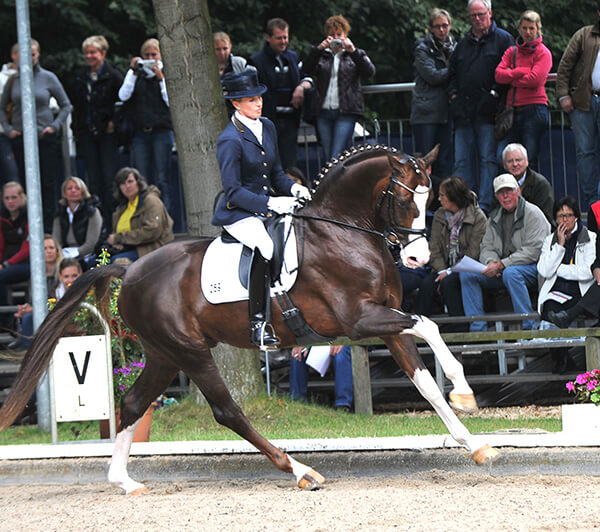
Benicio
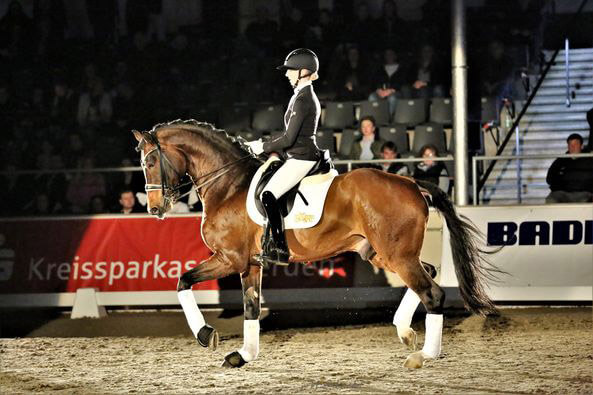
Fusionist

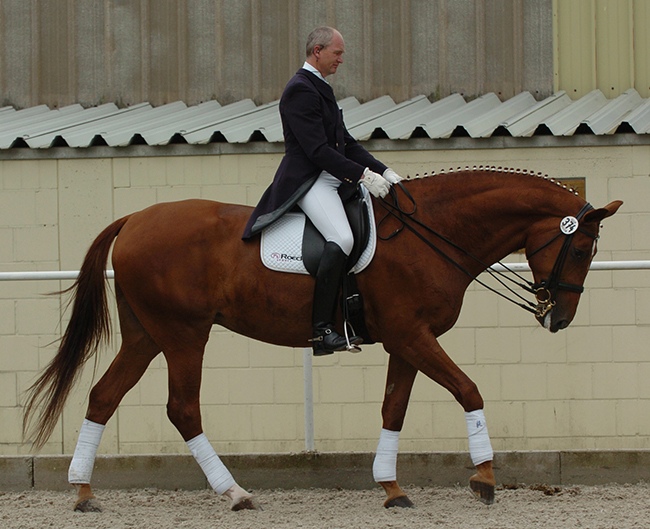
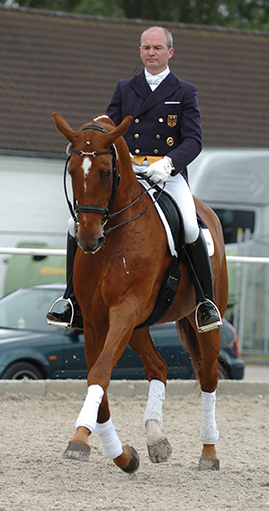
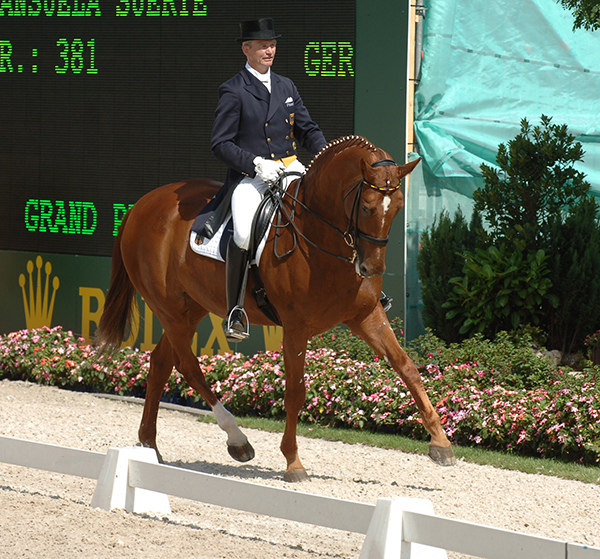
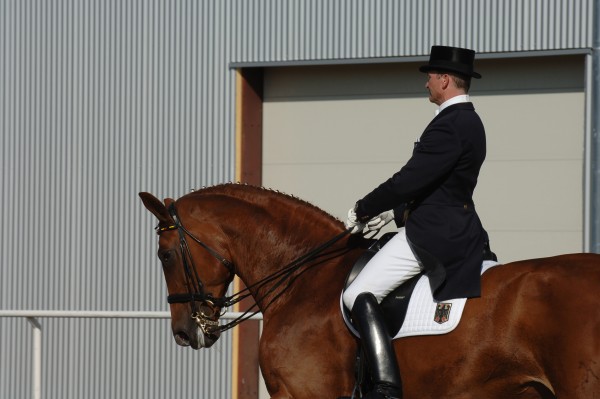
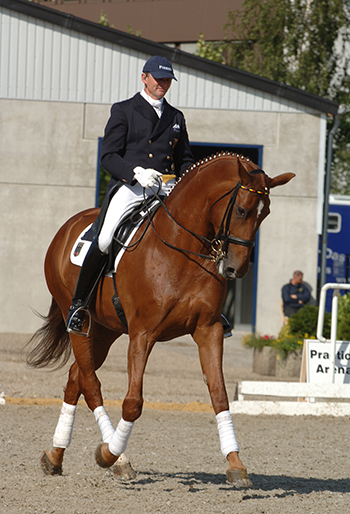
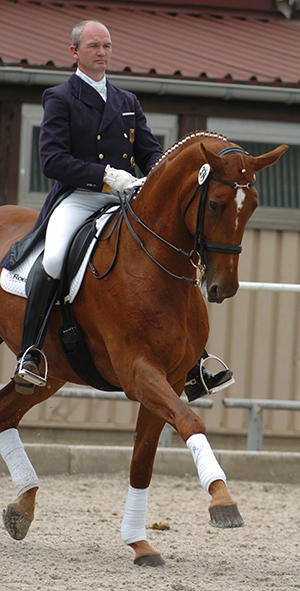
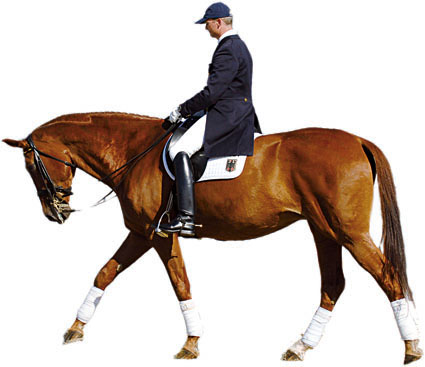
Excellent article. Well said Hubertus, so agree with his viewpoint – dressage should so be a case of enhancing a horses natural beauty and way of going without force or stress. Can’t remember who said it but ‘Dressage is the development of the horse into a happy athlete through harmonious education’
I’m only an ‘older’ amateur rider with a regular horse but I still strive to follow that maxim and have trained my own homebred to PSG using no shortcuts or gadgets 🙂 And God willing will get to GP with my current horse.
Here is one of the best presented arguments for the need to restore the original (classical) precepts to competition dressage. It’s already happening in many quarters, but until the FEI can take a long hard look at how they promote correct judging practices, it will be harder for those trainers and riders who put the horse’s welfare, ease, comfort and longevity first, to be sufficiently rewarded for their efforts under test conditions.